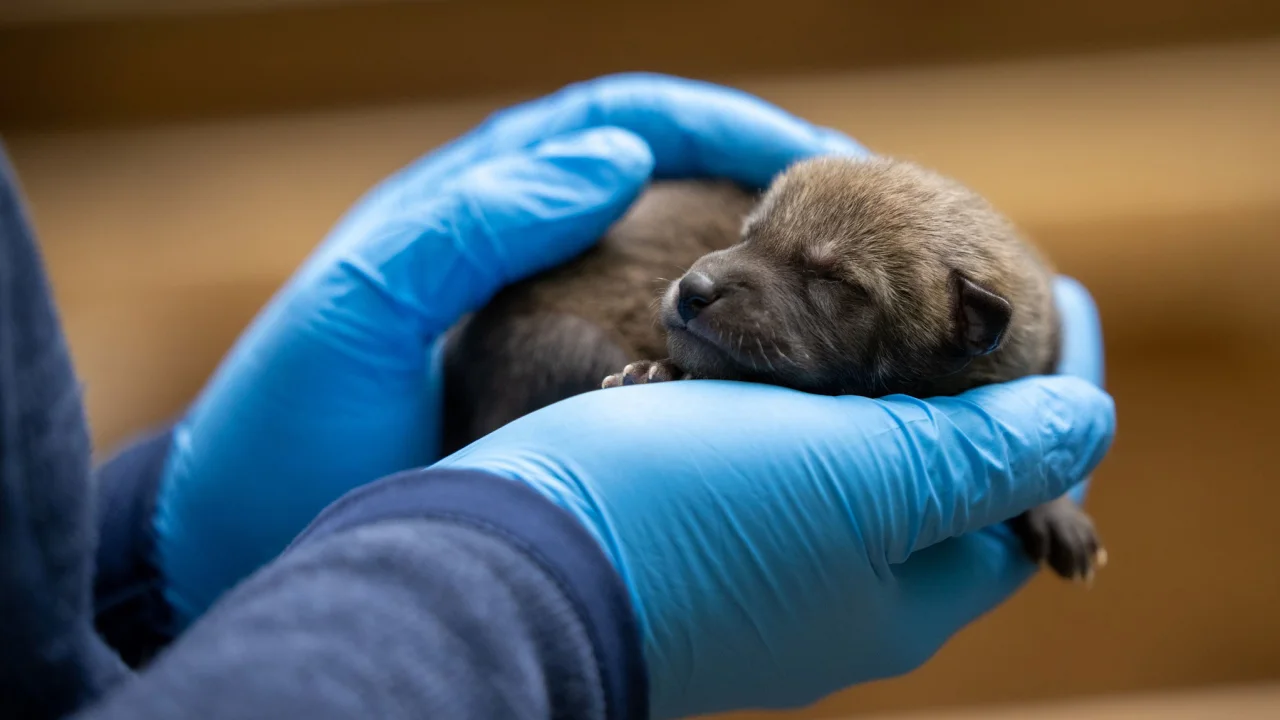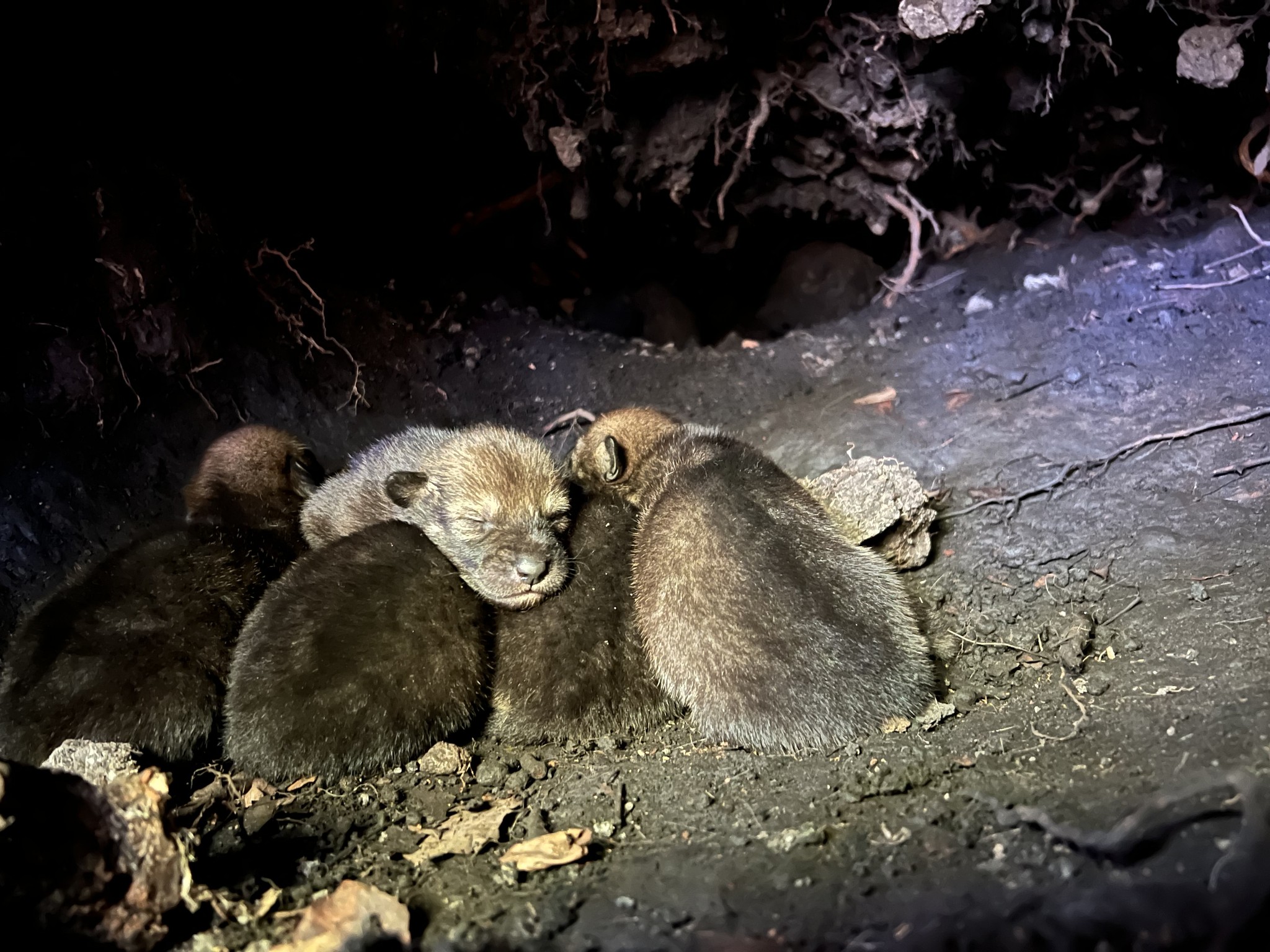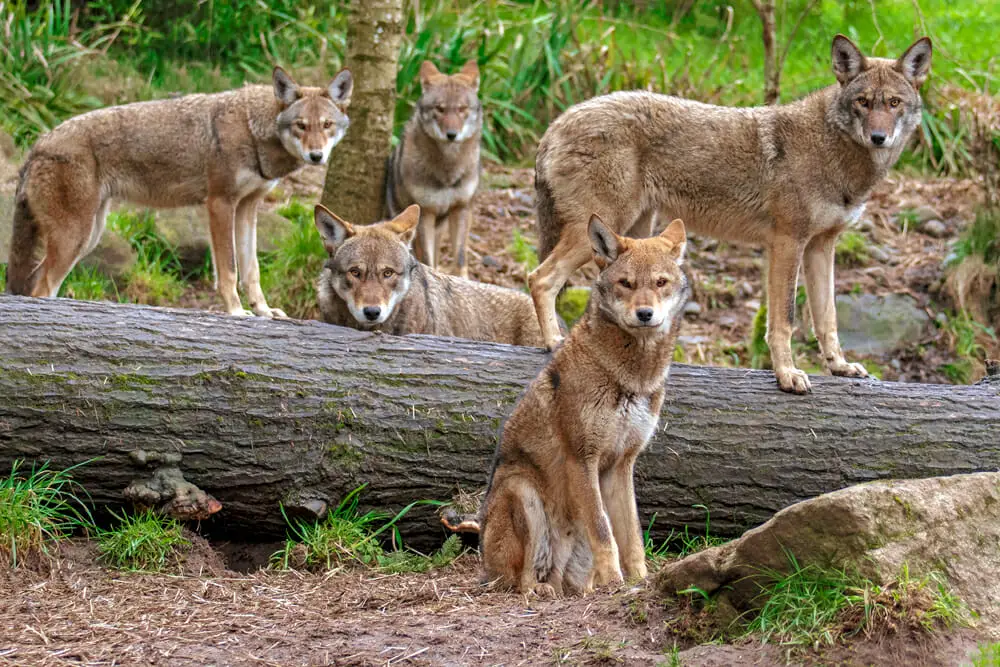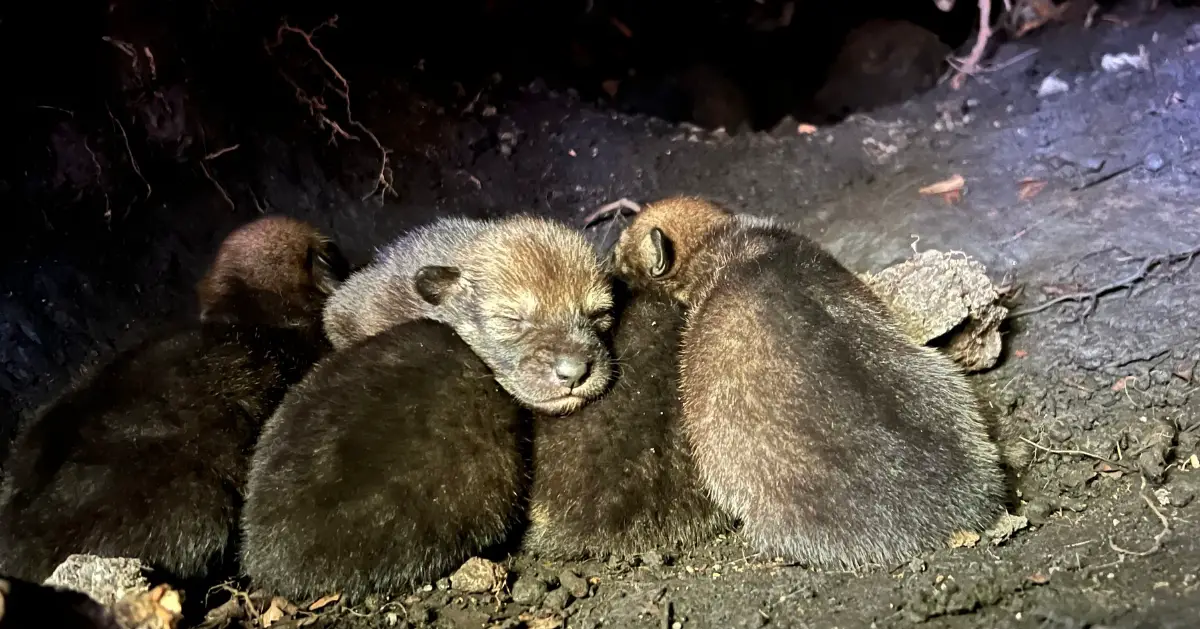It is always a cause for celebration when newborn endangered animals come into the world. Each new arrival signifies progress in safeguarding a vulnerable species from extinction.
Recently, wildlife experts have been joyfully commemorating the birth of a litter of endangered red wolf pups in their natural habitat. On May 10, the Red Wolf Recovery Program shared an astounding update: a litter of newborns, comprising three females and two males, arrived during the second week of April.

For the second consecutive year, the parents, named mother 2225 and father 2323, have successfully given birth to a litter in Alligator River National Wildlife Refuge located in eastern North Carolina. The Red Wolf Recovery Program has entrusted the care of a foster pup from Washington’s Point Defiance Zoo and Aquarium to this remarkable pair, augmenting their litter to a total of six pups.
As reported by Live Science, this brings the pack’s count to 13 individuals, establishing the family as the largest known red wolf group thriving in the wild.

The organization expressed their elation, hailing this development as a cause for immense joy and celebration in the year 2023.
Ben Prater, the director of the Defenders of Wildlife Southeast Program, expressed his enthusiasm, stating, “This is exceptional news for red wolves in their natural habitat. With the addition of these new pups and yearlings, this family group has evolved into a substantial and fully functional pack. We extend our gratitude to the FWS biologists who made this possible. It instills hope for the future of species recovery.”

The red wolf, recognized as the rarest member of the canine family worldwide, holds the status of “critically endangered” on the IUCN Red List. Once a populous species, it neared the brink of extinction by the 1960s, prompting the need for protective measures.
Following its designation as an endangered species, endeavors were initiated to breed red wolves in captivity and reintroduce them into their natural habitat. The population of this species reached its pinnacle in 2006, with 130 wolves. However, they encountered further setbacks. The Washington Post reported that a state law permitting coyote hunting resulted in numerous red wolf fatalities.

“The red wolf reached its lowest point as a wild species precisely when humanity was grappling with the depths of the pandemic,” remarked Ron Sutherland, the chief scientist at the Wildlands Network. “At that stage, the red wolf existed merely as a spectral remnant, barely holding onto reality with the presence of 200 captive animals dispersed among zoos across the nation.” According to the Wolf Conservation Center, as of February 23, there were merely 14 red wolves remaining in the wild in North Carolina, underscoring the immense significance of this recent arrival.

